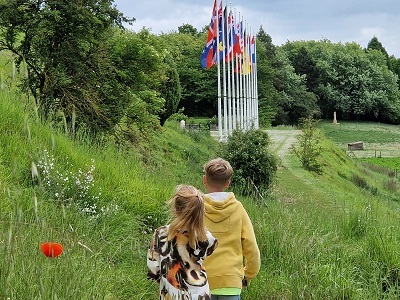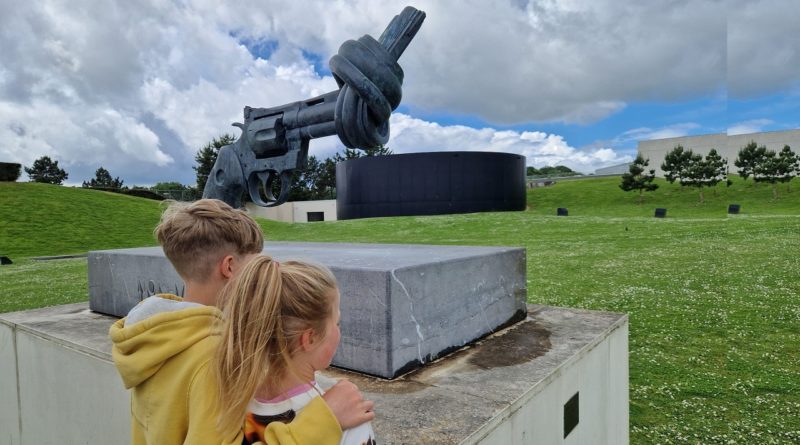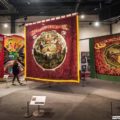Remembering D-Day
“What are all those noises?” our 9-year-old daughter asks, as we stand in the half light of General Richter’s Underground Bunker at the Mémorial de Caen Museum.
“Explosions,” I tell her.
“Real ones?” she asks.
“No, but this is what it would have sounded like in here 80 years ago, during D-Day. Those other noises are all the people typing messages and sending radio signals. They didn’t use mobile phones in 1944.”
“Oh,” she looks down the length of the 70m bunker before walking away to take some pictures with her brother.
I don’t bother to explain more about the landings, as we’ve just spent two hours in the museum above us learning about the horrors of war and the sheer terror that the soldiers on both sides must have felt during the invasion.
 It might seem like an odd place to spend a family holiday in May half term, but this visit is just one aspect of our holiday in Normandy and Brittany, and while we’ve already spent some time on the landing beaches nearby, they just look like beaches to 21st century kids. The Mémorial de Caen Museum, on the other hand, has shown them what actually happened on the beaches.
It might seem like an odd place to spend a family holiday in May half term, but this visit is just one aspect of our holiday in Normandy and Brittany, and while we’ve already spent some time on the landing beaches nearby, they just look like beaches to 21st century kids. The Mémorial de Caen Museum, on the other hand, has shown them what actually happened on the beaches.
We’ve not based ourselves in Normandy for the entire trip. Our base, in stark contrast to the Mémorial de Caen Museum, is possibly the happiest corner of Brittany and one of the most popular Eurocamp sites in France. But today is about honouring the people that made it possible for us to enjoy such freedom and give the kids such amazing opportunities. It’s particularly important that we do so with so much conflict going on in the world at the moment. I don’t want the children to be terrified by what is happening in the world, but I do want them to understand how horrible war actually is.
We exit General Richter’s bunker and climb a small hill toward the exit. Poignantly, there are poppies growing all along the side of the path. At the top of the hill we find a memorial garden to the Canadian soldiers who lost their lives in the Normandy landings, and then one for the British soldiers who lost theirs. After that we find some anti-war sculptures, like a gun with the barrel tied into a knot.
I’m content that the children have learned enough about D-day for one day, so it’s time to head back to the camp now and let them enjoy being carefree kids again.






